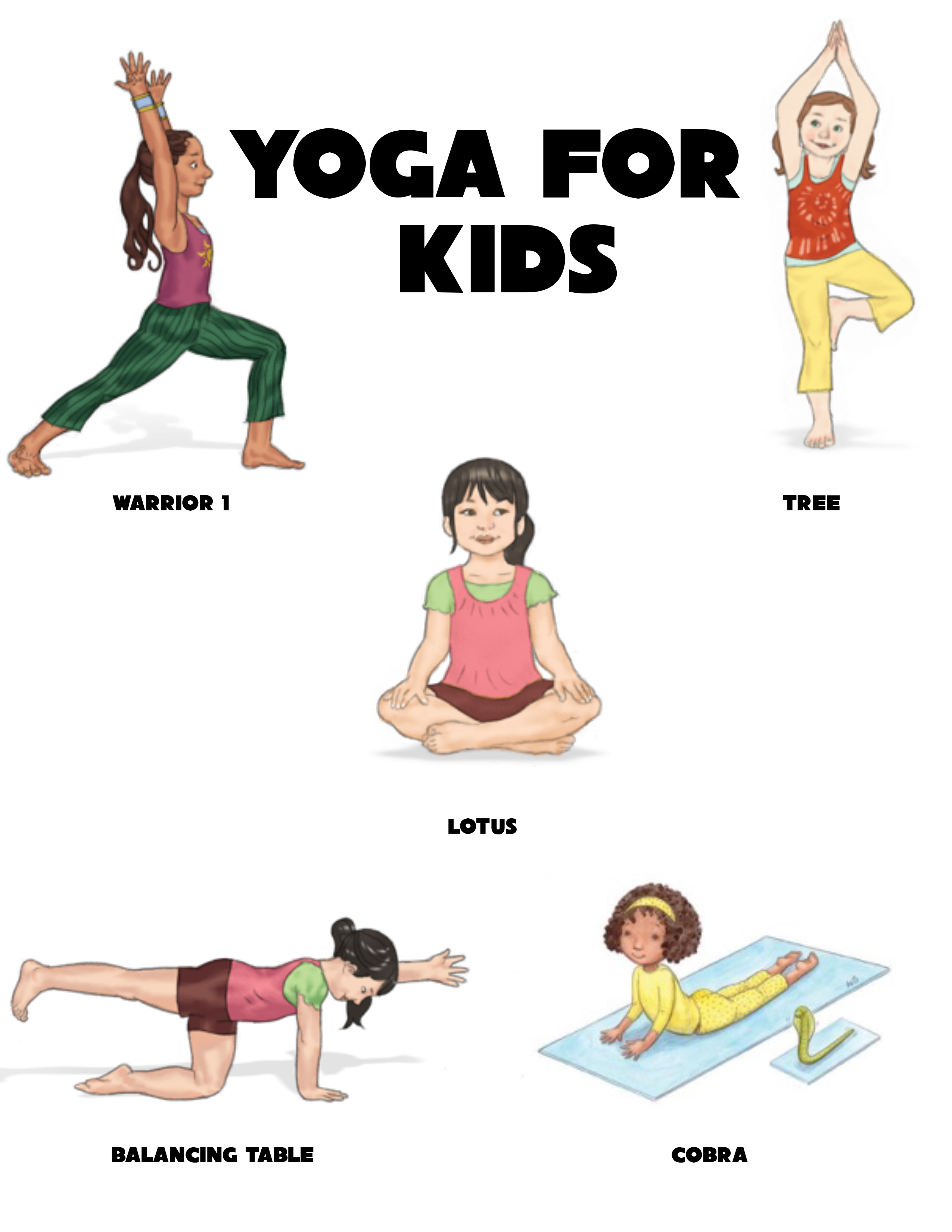When I was in college, I started teaching yoga for preschoolers! Whenever I would tell someone, they thought it was funny that I taught yoga to such a young age. The truth is that it helps to start practicing yoga when you’re young. I grew up learning yoga from my parents and I realized when I was a teen that I knew so much about stretching from learning the poses in yoga class. When I moved to LA, I decided to continue teaching yoga for kids and I have found it to be a rewarding and enjoyable experience. If you have an interest in teaching yoga to your own children or learning to teach yoga for kids, I’ll give you a few hints to help you get started:
1. Stick to a pattern
I find that if kids know the way that each class goes, they stay interested because they are excited to show you that they know what’s coming next. I usually start with everyone sitting cross-legged, then we sing an opening song, do a few breathing exercises and start learning the poses that we are practicing in that class. I start the same way every time so that they understand the structure of how the class works. When I switch it up, I often find that they become too excited and can’t calm themselves down. When we start with singing and breathing, they begin to relax and are able to focus. I would try to find some patterns that work with the age range and class size that you are teaching. You may have to try a few things to see what works best for each group.
2. Make up stories for each class
One of the most useful things that I’ve learned as a children’s yoga teacher is that you have to create stories to keep the kids interested. The kids are there to have fun. If you teach the class the same way you would an adult yoga class, they will lose interest in the poses. So I create stories to keep them engaged! Last week I wanted to teach superhero pose in class, so I started by getting everyone on their stomachs and saying that we have to wait to receive the call that someone needs “help from a superhero.” I had them reach behind them to grab their foot and “answer the phone,” which resulted in grabbing both feet and going into bow pose. I said we got a call to save a cat from being stuck in a tree, so we incorporated the superhero pose by flying over there, landing/pausing to look up at the tree, and then taking off again to save the cat. The class was very interested in this and wanted to do it several times in a row. I try to do something similar to this every week with a new pose, because storytelling is a key part of keeping their attention.
3. Vary the level of yoga based on age
I teach groups of kids that are 2 1/2-3 all the way to 5-6 years old and the classes are drastically different. With the younger kids, I focus on poses that are named after animals and sing a lot of songs during class. The older the kids get, the more challenging poses I teach. They understand the basic poses, so I teach more balancing poses and breathing exercises. The older kids also love games, so after we’ve tried all the poses, I’ll explain a yoga-based game that we can all do that incorporates what we’ve learned in that class. One of my favorites is “Red Light/Green Light,” where the kids freeze while holding tree pose. It’s fun, challenging and the kids are encouraged to stay in the pose as long as they can.
4. Be prepared to improvise
You can set up your lesson plan for each class, but typically classes will not go exactly the way you expect. Sometimes the kids will be interested in doing the poses quickly, and sometimes by the end of class you realize that you only had the chance to get through 3 poses. It varies on the day, so always have a game, stretch, song or an additional pose that you can teach in case you have extra time to fill. One of my favorite stretches it to make a “Yoga Sandwich,” where everyone has to make a sandwich sitting in seated forward fold. Starting at the waist, they stack bread, lettuce, cheese, or anything the kids suggest onto their sandwich until they have to reach all the way for their toes. You can also improvise by using the kids’ suggestions. They are happy to tell you the pose or the game that they want to try that day!
Kids can tell if you are stressing out during the class. They will be more inclined to talk over you or not pay attention if you are struggling to get the class in order. You will still have to be able to control the class, but it will be much easier if you come in confident, calm and collected. They love to see you having fun, and will be more excited to try the poses if you are showing them that you can have a good time while practicing yoga! Remember to teach the poses with enthusiasm and encourage each child to show you their version of the pose! They will be very excited to show you their best.
BONUS TIP: Give out stickers at the end. Everyone loves stickers!

Contributed by Emily Parsons, a certified Let It Go Yoga Instructor
https://www.emily-parsons.com/



WoW …. that’s great!
Thank you so much Emily, I will do this with my grand children. You really inspired me.
I begin with collecting some photos of the cobra a warrior and a tree.
When I do yoga with them they are always quickly bored, but that will be different from now on.